I lately acquired a 25 Kg bag of Pasini Millebolle panettone flour, and this was the primary take a look at. The panettone is an easy variation on my typical formulation, meant to evoke a Danish pastry with pecan and apple. I added cardamom along with vanilla bean, plus a wide range of inclusions totaling roughly the load of flour within the recipe.
I preserve two lievito madre starters, one for Shokupan and one for Panettone. The panettone one is significantly older, and behaves in another way in various methods. I’m able to take it out of storage and have a extremely lively LM in two or three days, whereas the Shokupan starter is much less aggressive but additionally extra sugar tolerant. Right here is the panettone LM on day two:
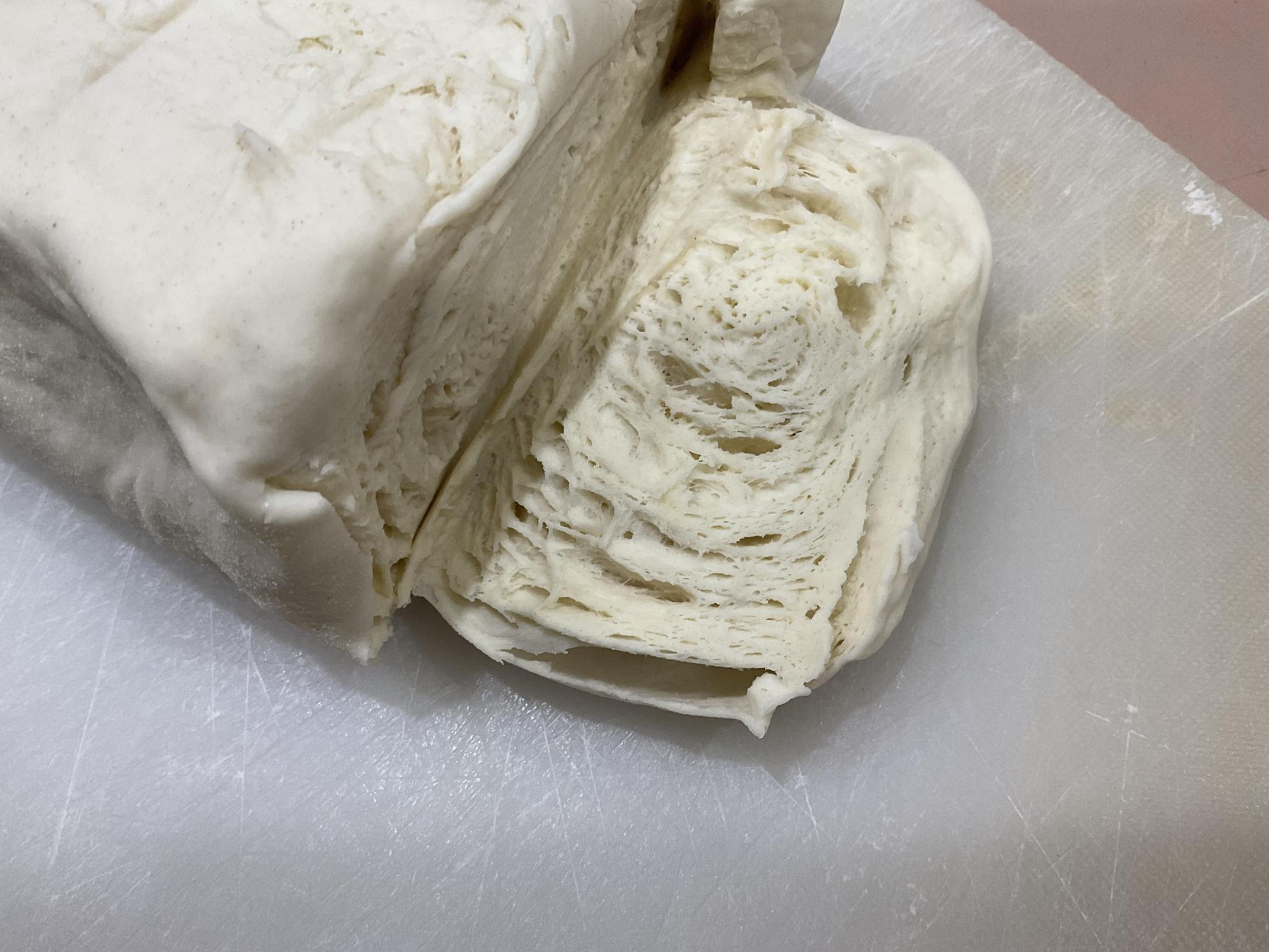
I’m additionally discovering that ambient fermentation works fairly properly whereas in upkeep mode on the LM. Simply previous to a bake, one or two heat refreshes assist set up the leavening traits that may go to work within the panettone course of.
Not too long ago I re-watched an attention-grabbing presentation by Michael Ganzle, the place he mentioned the aggressive surroundings in SD starters, confirming the worth of constant, long-term refreshments. Nevertheless for dwelling bakers, this sort of steady feeding is inconvenient and costly, so discovering cyclical equilibrium is essential. This LM has change into way more steady during the last 12 months regardless of durations of refrigeration. It does oxidize and lose energy if left greater than two weeks in storage, however might be revived.
For the primary dough, I used 3/4 panettone LM and 1/4 Shokupan LM. This was to attempt to assist insure staying in a “secure” zone for pH after the in a single day fermentation. Different components embody hydration, temperature, and sugar saturation within the dough.
This dough stayed proper on the trajectory and tripled in 12 hours. Temperature was 23C till the final two hours, once I elevated it to 26C. The pH was 4.79, which I’ve discovered is suitable for my course of. Dough was robust with numerous gluten growth.
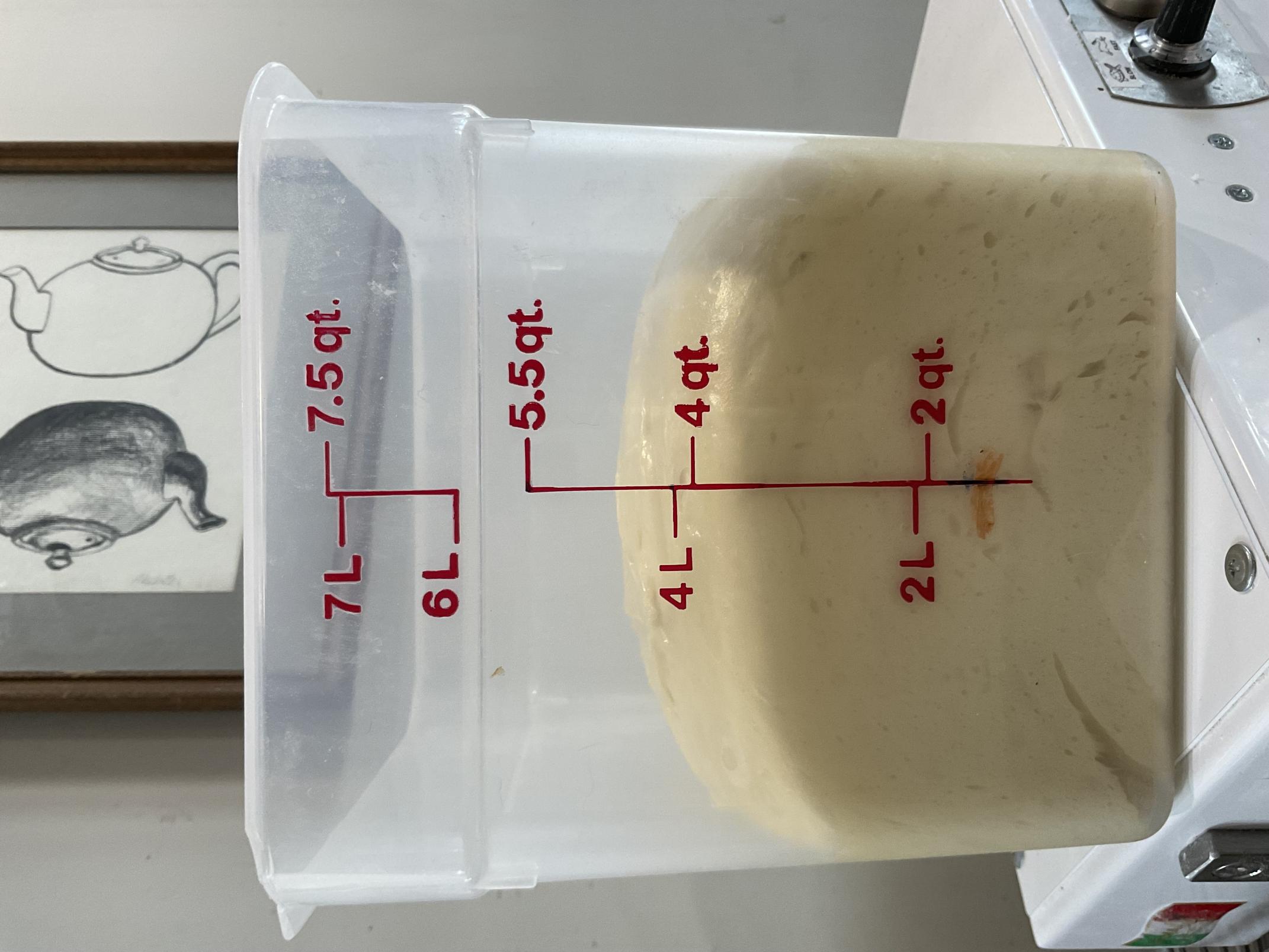
The Millebolle flour combined very properly and the second dough got here collectively rapidly. Since this was my first take a look at, I used to be conservative with hydration, however I’m assured that subsequent time this may be elevated. The dough dealt with extraordinarily properly in any respect levels, and rounded properly within the pans.
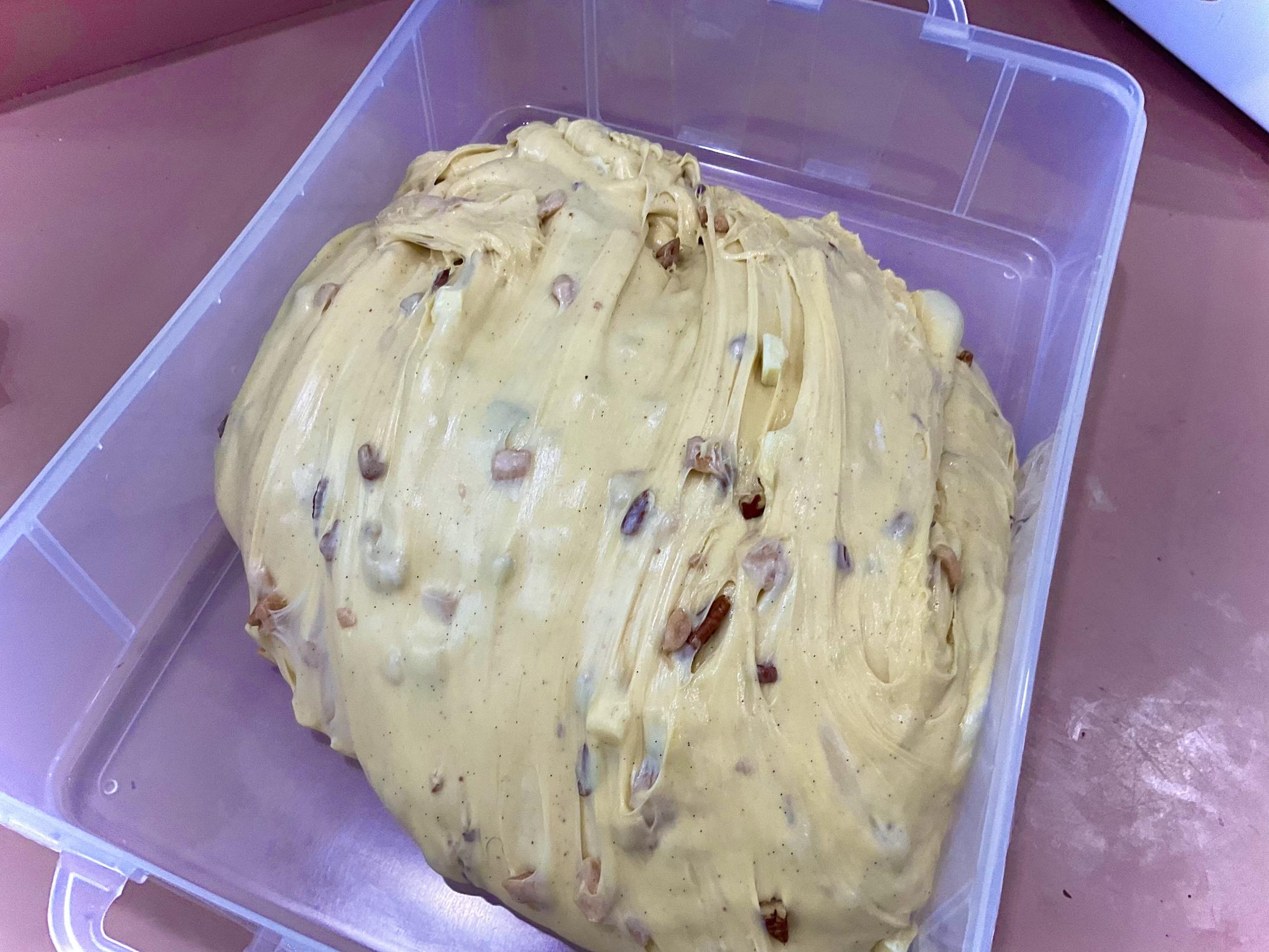
The most important shock is how rapidly the ultimate rise went. It was below 4 hours, and really rose a bit an excessive amount of within the pans earlier than baking, resulting in some “mushrooming”. Nevertheless, the loaves had dramatic oven spring, very passable!
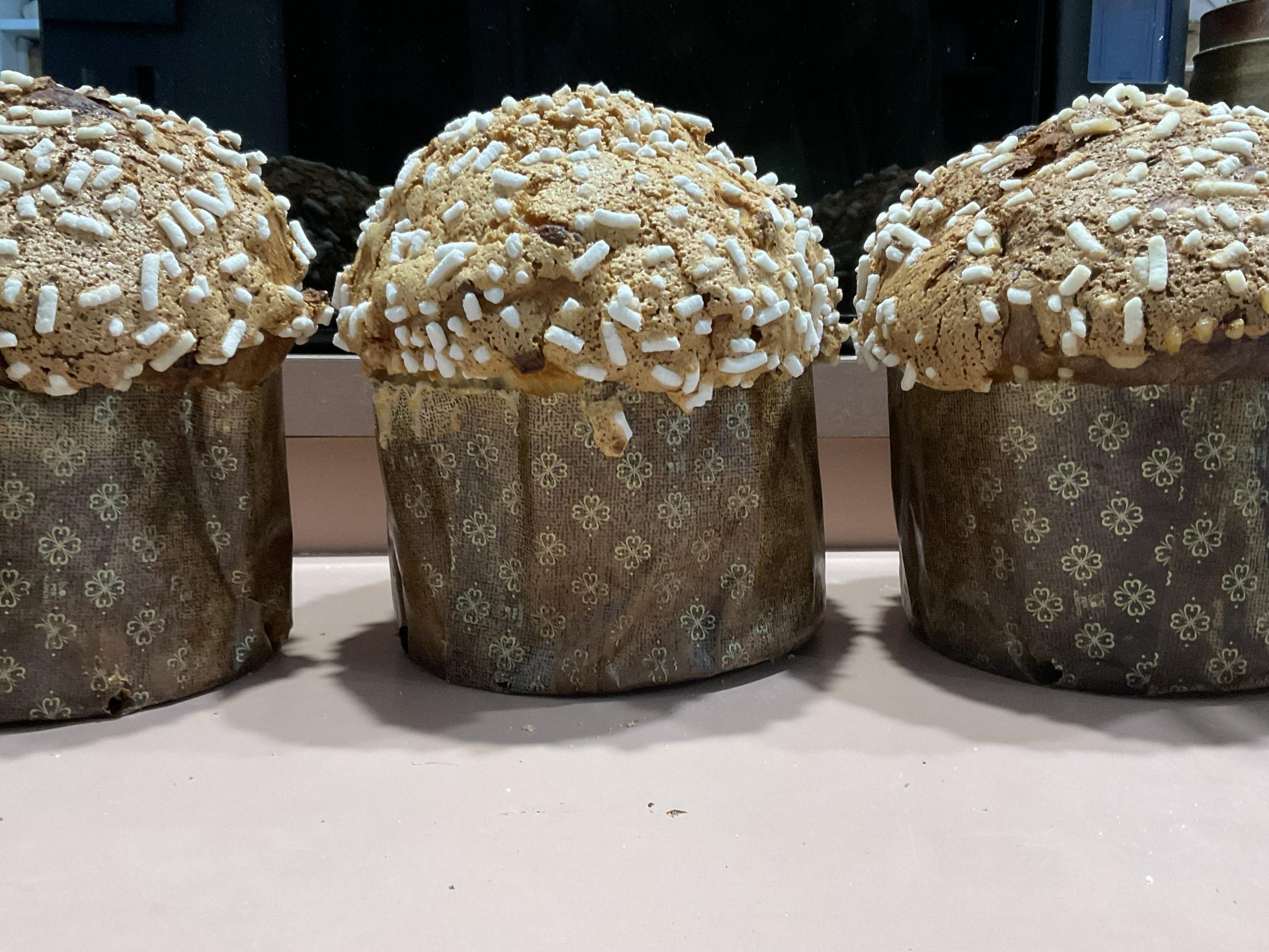
These are 1 Kg loaves in paper pans that are 6 5/8” in diameter. They’re scaled at 1050g per loaf.
The loaves turned out mild, excessive and moist, extraordinarily shreddy, with delicate taste and many pecans.
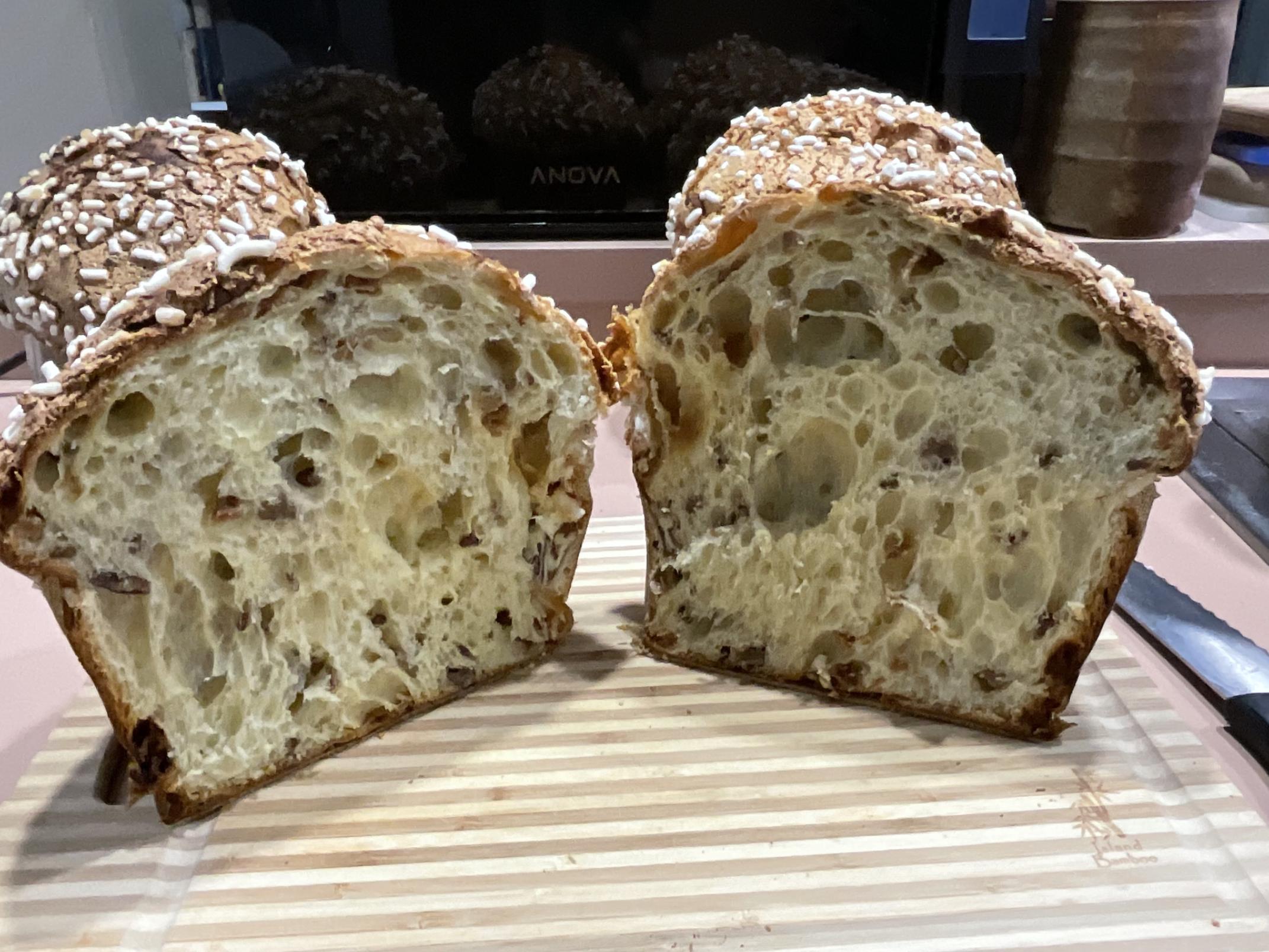
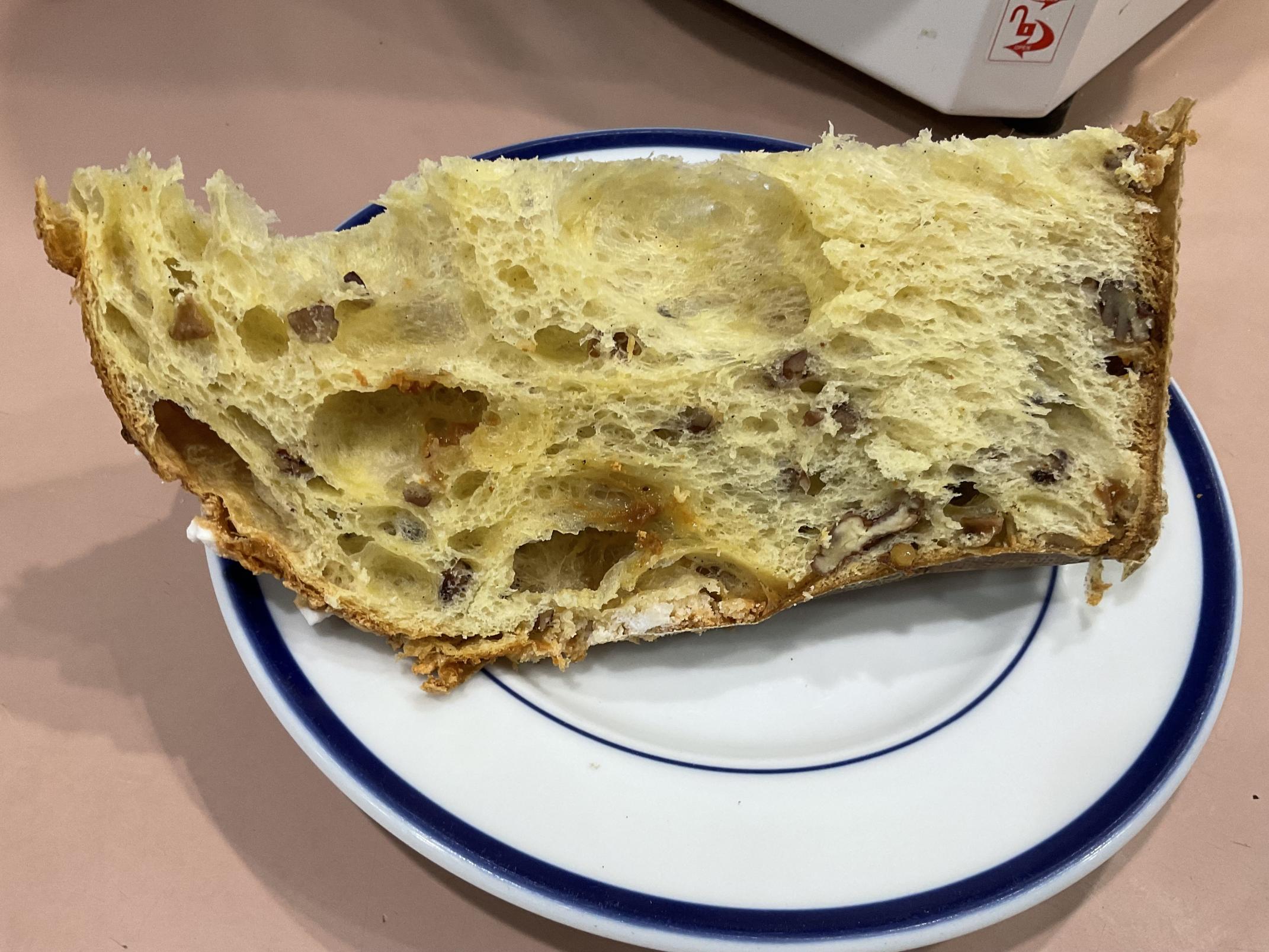
I’d suggest the Pasini Millebolle flour to anybody excited by brioche baking or different lengthy fermentation baking. It has a noticeably better power than different flours I’ve used, whereas additionally being a very good base for lievito madre.

